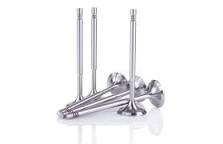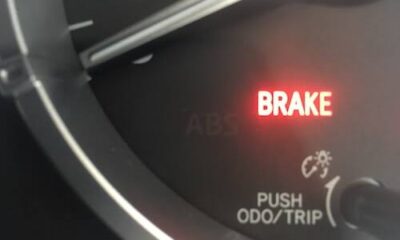Technology
What is Engine Valves

Engine valves are mechanical components used in internal combustion engines to allow or restrict the flow of fluid or gas to and from the combustion chambers or cylinders during engine operation.
Valves must withstand high temperatures. The inlet valves can reach temperatures of 300-550 ° C and the outlet valves temperatures up to 1000 ° C. The valves are also exposed. Erosion and corrosion. The valves are subject to heavy mechanical stress because the valve seat bends under combustion pressure and hammers on the valve seat. At 4000 rpm the valve hammers on the seat 2000 times.
Valves can be made of one material, but also composed of 2 materials. the valve sealing surface often has an ‘armor layer’, often a layer of nickel, chrome or stellite. Single material valves are made of chrome-nickel steel (inlet) or chrome-silicon steel (outlet).
Composite valves have the valve seat and lower portion of material that is resistant to high temperatures and chemical corrosion. The disadvantage of this material is that it cannot be hardened and has poor running properties. That is why the valve stem in the part that moves in the valve guide is made of material with good running properties and which can also be hardened.
Sodium valves
You can recognize sodium-filled valves by a thicker valve stem. This is because the valve stem is hollow. The hollow space in the valve stem is approximately 60% filled with sodium.
Sodium is a metal that becomes liquid at 97 ° C. When opening and closing the valve (going up and down) the sodium is thrown through the valve. The swinging sodium carries the heat from the valve seat to the valve stem and from there to the valve guide. Sodium valves give an average temperature drop of approx. 80 to 150 ° C compared to regular valves.
Valve guides
The valve guides absorb the lateral forces acting on the valve stem. Part of the heat from the valves is also dissipated to the cylinder head via the valve guide. Valve guides must meet several requirements; for example, they must have good sliding properties and be able to dissipate heat well.
Materials that are often used for valve guides are: gray cast iron, if necessary. alloyed with phosphorus and / or chromium, alloys of copper, zinc or aluminum or sintered metal
-

 AVIATION5 years ago
AVIATION5 years agoPhoto News: Air Peace commence flight operations to South Africa
-

 Car News5 years ago
Car News5 years agoPolestar is recalls over 2000 electric cars due to software bug
-

 RAIL5 years ago
RAIL5 years ago36 Killed in Pakistan Train Accident
-

 Technology5 years ago
Technology5 years agoCommon mistakes in CO₂ emissions calculations
-

 Business5 years ago
Business5 years ago2016 Volvo XC60 review and specifications
-

 Reviews5 years ago
Reviews5 years ago2021 Audi A6 Specifications and Review
-

 Reviews3 years ago
Reviews3 years agoDebutant Kia’s new K8 sedan benchmarks luxury, safety
-

 SAFETY / CAR CARE5 years ago
SAFETY / CAR CARE5 years agoHandbrake warning light; what it means and what to do
